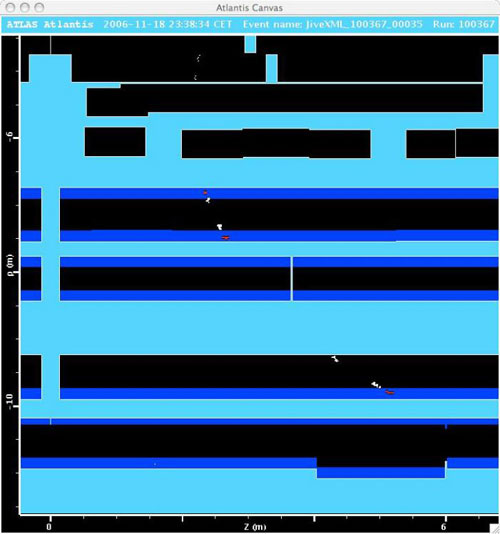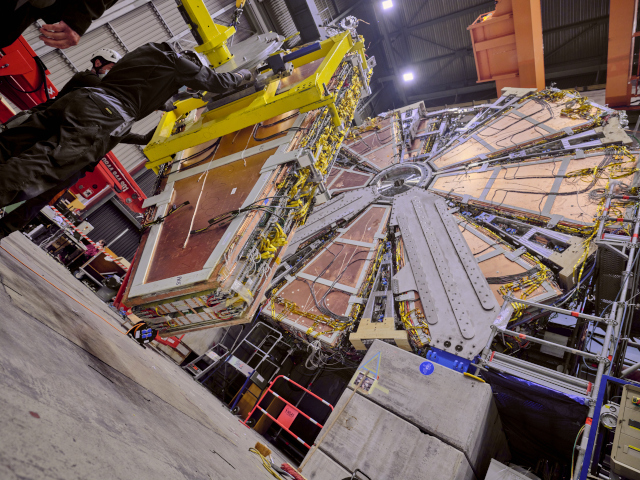Triggering and measuring bent cosmic muon tracks with the muon spectrometer barrel for the first time
22 December 2006 | By

Data have recently been collected with the toroidal magnetic field will provide for the first time the measurement of the cosmic ray muons' momenta in the ATLAS experiment and allow studies on trigger optimization, chamber calibration, chamber alignment and magnetic field maps. More than one million events were acquired. They are now being analyzed by enthusiastic members of the collaboration.
During the ATLAS barrel toroid stability test, bent cosmic muon tracks were seen for the first time in the ATLAS cavern by means of the ATLAS muon spectrometer. The barrel toroid has been powered at its nominal current (20.5 thousand Amperes) and kept in steady state for more than one day during the weekend of 18-19 November (see a report on this test in the Magnet section). During this test one large sector and part of a small sector of the barrel muon spectrometer were readout and used to detect the cosmic muons tracks bent by the toroidal magnetic field. Thirteen muon stations in the feet sectors (sectors 13 and 14) have been used in this test.

The muon stations are formed of Resistive Plate Chambers (RPC) that were providing the muon trigger, and Monitored Drift Tubes (MDT) that were used to measure with high accuracy the muon curvature hence their momentum.
More than one million events were acquired with acquisition rates of 18-30 Hz, depending on the trigger configuration. They are now being analyzed by enthusiastic members of the muon and Level-1 collaborations. The muon optical alignment system was also used to provide chambers and toroid magnet displacements during the ramp up/down procedure. In addition the B-field probes mounted on the muon stations took measurements that will be used to refine the magnetic field map.
These data collected with the toroidal magnetic field will provide for the first time the measurement of the cosmic muons momenta in the ATLAS experiment and allow studies on trigger optimization, chamber calibration, chamber alignment and magnetic field maps. In addition very important indications on the commissioning procedures were obtained by this first test.
The trigger and the muon communities are now planning to expand cosmic ray acquisition to more and more sectors starting from the top ones where service installation is almost completed. During the next days, the trigger chain will be further extended to include Level-2 components in the data taking. The next milestone will be a run in which two upper sectors are added to the readout in February.



